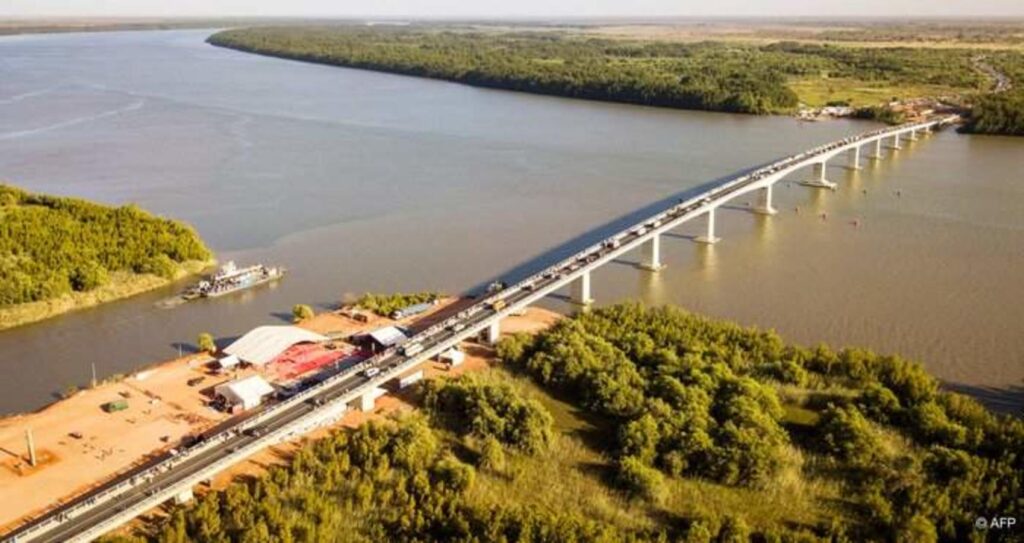The Issues
A Mutually Beneficial Partnership: The African Development Fund and Canada
Canada has been a member of the African Development Fund (ADF or the Fund), the low-cost loan and grant provider within the African Development Bank (AfDB), since 1973.
The ADF is one of the most effective vehicles for promoting economic growth on the African continent and thus building stronger and more prosperous trade partners for Canada.
As Prime Minster Carney said: “Now is the time to bet big on Canadians and play to win.” The African Development Fund presents the opportunity to do just that while also building stronger, more prosperous partnerships with Africa.
It is crucial that Canada increases our investment in the ADF at the replenishment conference in December 2025 to continuing the Fund’s successful track record of improving Africa’s development.
What is the African Development Fund (ADF)?
- The ADF invests in 37 African countries through low-cost loans and grants. Without the ADF, these low-cost loans might be unaffordable or unavailable.
- The ADF focuses on critical infrastructure that unlocks further economic growth and commerce.
- Canada is one of the top shareholders and through its contributions helps shape the Fund’s policies, investment priorities and activities.
- Replenished every three years, the ADF will hold its pledging session for its seventeenth replenishment round (ADF-17) on 15-16th December 2025 in the UK.
- To build on the success of previous replenishment rounds, ADF-17 will focus on two key pillars:
- Pillar I: Investment in hard infrastructure such as regional integration, energy, agriculture, water, sanitation, and health.
- Pillar II: Governance, policy dialogue, debt management, and capacity development.
- The previous replenishment (ADF-16) mobilized $8.9 billion, with Algeria and Morocco joining Angola, Botswana, Egypt, and South Africa as African contributors to the Fund—a milestone reflecting stronger regional ownership. Heading into ADF-17 replenishment, even more African countries are expected to pledge keeping the commitment to regional ownership.
- Canada contributed CAD $369 million to ADF-16 for the 2023-2025 period, or about 5% of the total.
- The ADF maximizes the value of each dollar invested by using contributions and innovative financing to unlock and attract further private-sector investments.
- The Fund provides a hard-to-beat value for Canadians: Every dollar generates $10 of direct investment in profitable projects according to AfDB estimates.
As Canada is looking to diversify its trading partners, the ADF presents an opportunity to invest in projects in line with Canadian priorities and building stronger markets for Canadian exports.

The Lobito Corridor: a major trade route to south-eastern Africa
The Lobito Corridor is a rail-and-port trade route to link the Copperbelt in DRC and Zambia to the Atlantic via Angola. Africa holds significant critical minerals reserves (essential for making batteries, steel, and aluminum). The African Development Bank, including through the ADF, has committed $500 million to build the Lobito Corridor. This major infrastructure project will create a trade route for an exchange of goods, notably copper and cobalt, to western ports, and will benefit Canadian mining companies operating in the region.

A few months ago, I spent 10 days before it was my time to cross.”
Mawdo Saine, Senegalese truck driver

It was not unusual for truck drivers like Mawdo Saine to wait that long for the ferry before the Senegambia Bridge was built, with 70% of the cost funded by the ADF. It reduced transit time from hours (and sometimes days) to just a few minutes and cut truck operating costs by 93%. The removal of this massive logistical bottleneck contributed to increased commercial flows, which will benefit Canada’s trade with West Africa.
Harnessing solar power from the desert
- The Desert to Power Initiative aims to provide electricity to 250 million people in 11 countries in the Sahel region (Burkina Faso, Chad, Djibouti, Eritrea, Ethiopia, Mali, Mauritania, Niger, Nigeria, Senegal, Sudan) through solar power and energy storage
- The ADF provided $303 million to the Mali-Mauratinia interconnection under the Initiative
- The initiative addresses critical infrastructure issues, powering the African continent, and boosting economic growth and trade with Canada
Why should Canada invest in the ADF?
- Investing in the ADF supports Canada’s strategic interests around trade diversification, critical minerals and energy.
- By 2050, 25% of the world’s population will be African. Itis the only region where population is expected to grow in the coming decades, becoming one of the world’s biggest markets—a huge opportunity for Canada’s trade long-term trade diversification efforts.
- To realize this potential, large infrastructure investments are needed. The ADF is uniquely positioned to deliver because it is African-focused and African-led and is already the largest development bank investor in infrastructure on the continent.
- By continuing to fund the ADF, Canada would contribute to Mission 300, a transformative initiative that will provide energy access to 300 million people, boosting economic growth and trade opportunities with the continent